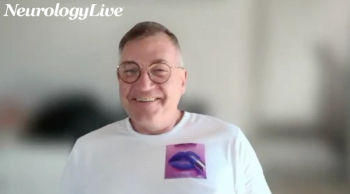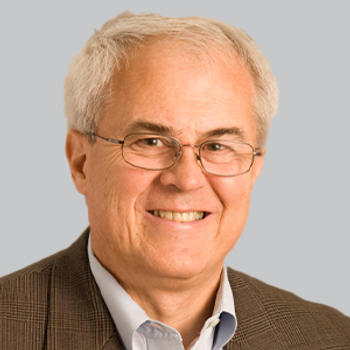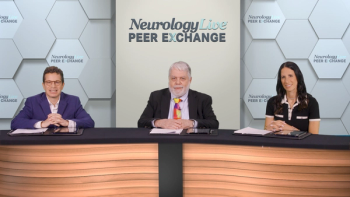
Behavioral Strategies for Management and Destigmatizing Migraine
Elizabeth K. Seng, PhD, associate professor at Yeshiva University and Albert Einstein College of Medicine, talked about migraine management through the lens of behavioral factors that clinicians can recommend and encourage to their patients.
"I chose 'all migraine management is behavior' because at some level, when you think about it, absolutely everything that we're asking patients to do to help manage their migraine—using devices, taking drugs, making appointments—all of that is behavior. Sometimes, in our migraine management efforts as a field, people fall through the cracks. That is when we don't recognize how behaviorally complex it can be for somebody to think about," Seng told NeurologyLive®. "These are episodic symptoms, they're really disabling. Those are real problems that our patients are trying to struggle with and real decisions that our patients are trying to make. If we forget the behavioral component of routine migraine management, we're missing an opportunity to improve the effectiveness of the treatments that we're offering patients every day."
The beginning third of the talk covered all the behaviors that go into routine care for medical management, while the middle section was about lifestyle. Finally, the lecture concluded with a section that was about how society interacts with our behavior. "That middle section about lifestyle is interesting because, on the one hand, you can't avoid lifestyle since everybody has one. Everybody sleeps, everybody eats, and everybody has to manage stress because stress happens to everyone. So those are all just parts of the human existence," Seng said.
As she continued her lecture, she talked about the issues with providers underdiagnosing migraines at times, as well as the disconnect between patient reports and the provider's understanding that goes into the decision of diagnosis. For improving diagnosis and treatment decisions, she listed out educational methods, the use of standardized assessments, communication interventions, and clinical decision support tools. In terms of adherence for patients, she noted in her presentation that "drugs do work in patients who do not take them.”
Seng then discussed the different types of migraine mediation, such as acute and preventive migraine treatment, and how well patients adhere to routine treatment recommendations. Some considerations she shared for improving patient adherence were building a working alliance with the patient, including having agreements on goals and tasks, as well as rapport. In her presentation, she stressed to the audience to, "ask the patient about adherence at every visit." Among the approaches for ongoing adherence assessment, she mentioned using a diary as a self-monitoring intervention, focusing on behavior instead of pain symptoms. Additionally, she brought up motivational interviewing as more of a productive way to have conversations about adherence with the patients.
"I think it's really important for every provider who interacts with patients. I recognize that not every medical professional and every neurology researcher interacts with patients. But for those of us who do have direct patient interaction, all of us are asking patients to do stuff, maybe taking a drug, following up in 6 months, starting an exercise, it can be any number of things. Motivational interviewing is basically a relationship style. It's a communication style, that helps people find their intrinsic motivation, the reasons that they want to change their behavior," Seng said.
When discussing lifestyle, she spoke about the basic human needs such as sleep and eating, addressing that there are ways in which patients can live with migraine without sacrificing these. She heavily stressed the importance of helping patients understand that they do not cause their migraines. In addition, she also noted from research that "the associations between behavorial factors and migraine symptoms do not necessarily imply that behavior change will improve migraine symptoms."
"If we can identify ways that people with migraine can improve or change their diet, their exercise, their sleep, their stress management, that's great. At the same time, it's even more than that because we're also identifying the mechanisms of migraine management that may be able to then be translated into new drugs or new devices," Seng told. "So lifestyle isn't different really from other management strategies. It's just another approach to try to identify ways to hit similar targets. At the end of the day, what we're talking about is improving migraine management through treating the migraine brain and the migraine body systems. We can do that through multiple entrances, medications, devices, and behavior."
In the closing of her presentation, she emphasized understanding how society has a stigma about patients with migraine and how harmful that can be for them. She noted that in the long run, there needs to be change in the world about migraine stigma. In the meantime, she mentioned that medical professionals can do small actions to make safe spaces for patients, not only through words but also in physical spaces.
"So headache centers should not have bright glaring lights and people should not be wearing perfume. We need to make sure that the spaces that we set up for people with migraine are friendly for people with migraine. They need to know when they walk in that this is a space that's designed to care for them. A place where your needs are not seen in a special or strange or that you're overly sensitive but that this is just what your brain thrives on and that is fine. I think we need to be very thoughtful about how we make our clinics, a place where migraine stigma doesn't exist," Seng said.
REFERENCES
1. Seng EK. Seymour Solomon Award Lecture: All Migraine Management is Behavior. Presented at: 2023 AHS Annual Meeting; June 15-18; Austin, TX.
Newsletter
Keep your finger on the pulse of neurology—subscribe to NeurologyLive for expert interviews, new data, and breakthrough treatment updates.









































